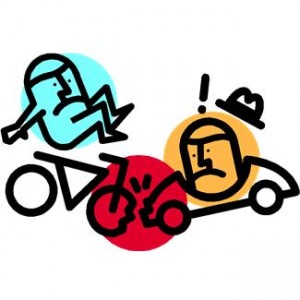Gentle Reader,
What is the difference between fixing a problem and prevention? Most of my blog posts consider specific problems developing from pain in the joints caused by traumatically induced arthritis or the age related osteoarthritis and spinal stenosis issues some of us face just because we’ve been moving hard and fast all our lives. The fix-it approach tries to mimic the medication or prescription our doctor has recommended, but take care of the problem—fix-it—with supplements or therapies instead. The “problem” may be a wakeup call, that tolling bell that asks, what could I have done to avoid this in the first place? You question the traditional medicine path that suggests a medicine or surgical procedure because they have developed a sure-fire protocol for the problem you want fixed. Is there another approach?
You really want better overall health and think it might, just might make the arthritis pain lessen if the whole body were better fortified. You already eat a healthy diet of more vegetables than breads and cakes, of lean grilled meat and fish over fried fish and chips or hamburgers with all the trimmings. You limit your alcohol intake to a couple glasses of wine a week, maybe a beer or 2 and the rare martini. You use olive oil instead of butter and hardly ever open a box to make breakfast or dinner. The last time you swung through the Golden Arches was back in ’89. You haven’t microwaved left overs in a flimsy plastic container or sipped water from a thin film plastic bottle that has been sitting in the sun. Toxin-free, healthy diet, exercise. A+.
Still, something isn’t quite right. The finger nails are still thin, and like your hair ends, break easily. You bruise every time you bang into the ball at the back of the car that pulls the trailer. You have bad breath and dandruff no matter how much Listerine and medicated shampoo you use. You’re not sleeping the way you’d like and you hit the wall every afternoon around 3 looking for a cookie and a coke.
Why isn’t the great diet, good exercise and toxic free world giving you the optimal health you are wanting?
The wise person that answered that question for me 26 years ago suggested that maybe I wasn’t getting enough nutrition. My food wasn’t cutting it. Perhaps I needed supplements.
You are already taking supplements, you say, and you still have some of these not-so-great physical situations.
In 2004, Shaklee’s new owner, president and CEO, Roger Barnett, did an extraordinary thing. He had blood drawn from 500 Shaklee consumers who had been taking a variety of supplement (“the shelf”, we call it) for at least 20 years and handed over the data to one of the pickiest health organizations in the US, the University of California, Berkeley, School of Public Health. Take this, he said, and compare the blood samples of these Shaklee users with people who have taken at least a multivitamin for 20 years and people who have never taken any vitamins. Whatever your results, publish them. What Chutzpah, what daring, what risky business.
The results were astonishing to the head researcher, Dr. Gladys Block. On every possible measure the Shaklee users’ overall health markers were significantly better than the others. The user of generic multivitamins were, by some measures, less healthy than those who took no vitamins at all. You can read the entire study here. Here about the study here.
Then Shaklee’s scientists designed a new product called Vitalizer containing 6 pills/capsules, tablets designed to get into the blood stream and work were the nutrients are most needed in a multi-patented delivery system.
When you ask me for (or go in search of) specific supplements for specific issues, step back for a minute. Take a bird’s eye view of your overall health and ask yourself. “Am I getting a good absorbable protein and the basic vitamins and minerals that form the building blocks for everything?” Perhaps beginning with an Energizing Soy Protein and Vitalizer for 90 days (it takes that long for the blood to be all new) will fill in the gaps and give you an overall healthier base. Then see to the “fix-it” issues. The specific supplements designed to alleviate pain, reduce stress, lower cholesterol, reduce menopause symptoms, sooth sore muscles, aid digestion and build solid bones. We call this the Common Sense Approach to Health and Wellness. Changing brands could make all the difference.
Take action: Check this list of symptoms. If you treat any of them with over the counter medicine, you are putting a tape over the red light on your dashboard and not looking into the root cause.
__Tired
__Overweight or Underweight
__Stress
__Dry/Oily skin/Problem skin
__Thinning hair/Dull hair
__Emotional on empty stomach
__Dandruff
__Need caffeine/sugar
__Can’t wake up
__Can’t sleep/Restless sleep
__Poor attention span
__Splitting Nails
__Irritability/Depression
__Nervousness/Anxiety
__Allergies
__Bruise easily
__Heartburn/Need antacids
__Sinus problems
__ cold hand or feet
__Poor night vision
__Back pain/Leg pain
__Constipation/Diarrhea
__Poor digestion/stomach
__High/Low blood pressure
__High/Low blood sugar
__Various aches and pains
__Elevated cholesterol
__Cravings for sweets
__PMS/Hormonal problems
__Menstrual cramps/problems
__Subject to colds/flu/infection
__Muscle cramps
__Joint pain/Arthritis
__Bleeding gums
__Headaches
__Breath or body odor
__Decreased sex interest
__Infertility/Sterility
__Menopausal symptoms
__Vague “blah” feeling
Shocked or pleased with your results? Let us know.
My challenge to you is this: If you take the Starter Program of Energizing Soy Protein and Vitalizer for 30 days, and see no change in our health, you will get your money back, no questions asked.
Shop at www.HiHoHealth.com. This Vitalizer Wellness Starter package retails at $135.50 plus tax and shipping. My offer to you is 10% off. Vitalizer Gold for the over 50 is a little more, or $142.00 plus tax and shipping. This is a 30 day supply. The 10% rebate comes at the beginning of next month.
Fondly, Betsy
Be Well, Do Well and Keep Moving
BetsyBell’s Health4u
www.GrandmaBetsyBell.com
206 933 1889 1 888 283 2077
betsy@hihohealth.com





